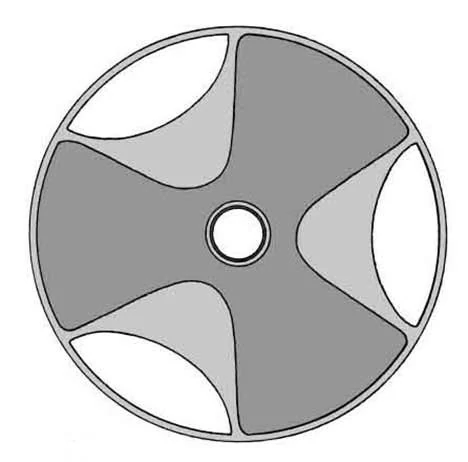The object is made of schist. This is a porous and brittle rock that would be extremely difficult to carve, especially with such delicate details.
Schist is composed of coarse grains and is characterized by elongated minerals in distinct layers. It has the propensity to flake when worked and can be crushed very easily when tools are applied to it.
So here we have our first mystery: how was the disc carved in such fine detail?
In asking this question, we must consider the age of the disk. Prince Sabu’s tomb dates to around 3000 BC, making the disk at least 5,000 years old! It is believed that the tools used back then were made of stone and copper, which would make fine craftsmanship quite challenging, if not impossible, especially in a material as fragile as shale stone. Somehow, the Sabu Disk seems out of place in the tomb of a First Dynasty nobleman.
The next mystery is the purpose of this object. Over the years, many convincing theories emerged. Almost immediately after its discovery, the disk was «dismissed» as a «vase» or «incense burner,» or simply a trivial decorative or ceremonial item. But many believe this to be far from the truth. One glance and only basic knowledge of mechanics and engineering offers a completely different interpretation: this disk could be part of a mechanism.
Currently, there is a new theory from a historian that makes more sense in terms of its purpose ;
Armed with a 3D printer, this person created an accurate replica of Sabu’s disk in an attempt to test his own theory: the disk was an ancient «impeller,» part of a centrifugal pump. When placed in a casing and propelled at high speed through the small shaft at its center, the disk was extremely efficient at displacing water. Furthermore, when propelled without a casing to direct the displaced water, the disk created a powerful vortex. Observation of these recorded experiments makes one thing clear: the curiously bent lobes and slightly concave shape of the disk have a purpose. Thanks to the intricately carved details, the disk can displace water with ease and is apparently a crucial component of a water pump mechanism.
One fact supports this theory: Ancient Egypt depended on irrigation. Later in their history they perfected water management through basin irrigation, a process that allowed them to control the rise and fall of the river. In this way they were able to maximize their harvests and enhance their agricultural capabilities. So why should it be strange to consider that they tried to create an advanced design that would help them irrigate the land quickly and efficiently?
Ancient astronauts?
But shale does not seem a strong enough material for a pumping mechanism. This suggests something else: did Egypt’s First Dynasty craftsmen attempt to recreate an older object using the tools and materials available to them, an object they may not have fully understood? Many theories suggest that the Sabu disk is just a shale stone replica of an original item made of metal. It is even suggested that the object was discovered among the remains of an older, more advanced civilization, one that preceded the earlier history of Ancient Egypt. The renowned Swiss author, Erich Von Daniken, is one of the leading proponents of the theory that extraterrestrials or higher advanced civilizations influenced early humans. He suggests that the Sabu Disc was an Egyptian stone copy of an internal component of an alien spacecraft hyperdrive, or more simply a stone model of a flying saucer. Others compared the disk to the advanced light-rimmed flyers that were developed in the 1970s by Lockheed missile engineers, and indeed there are many similarities.
There are other theories, some more extreme than others. One French author suggests that the Sabu Disk is just one of many that were an integral part of an early «factory». This complex theory explains how the ancient Egyptians manufactured sodium carbonate inside the pyramids using advanced systems and technologies.
As can be seen, many proposals simply veer into the realms of the impossible and seem more based on wish fulfillment than solid archaeology. Ancient hyperdrives, factory complexes, flywheels and other unlikely suggestions are simply impossible to prove. Perhaps it’s time we looked at the early Egyptians from a different perspective. Although Prince Sabu lived 5,000 years before the present, it does not mean that he and his contemporaries were not capable of observing the world around them and finding logical and ingenious solutions to the problems of their time. Still, many aspects of this record cannot be easily explained, leaving many questions unanswered.




Hey there, everyone! I just wanted to mention that I really enjoy reading this website’s posts and how often they are updated. It has nice things in it.